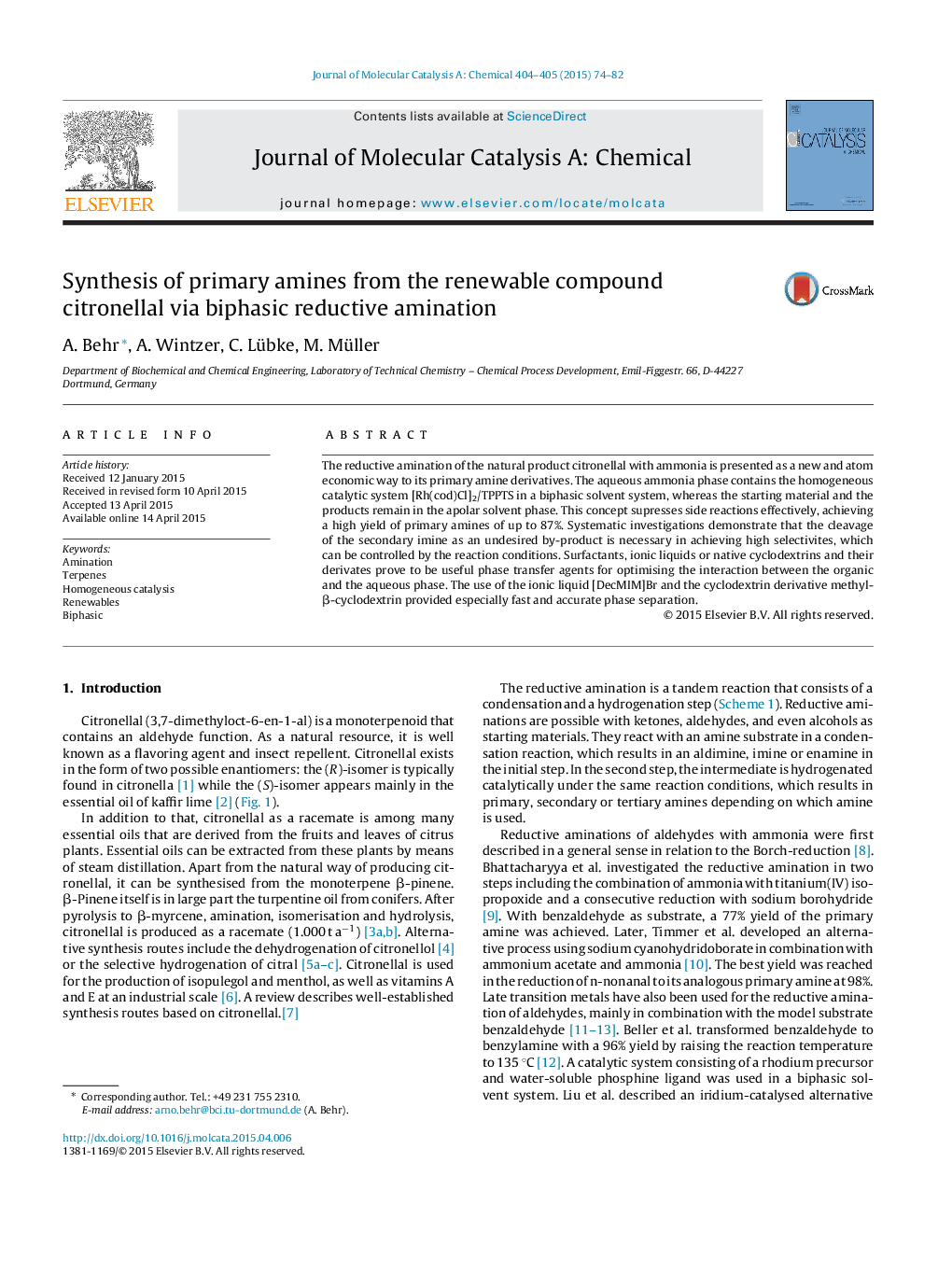| Article ID | Journal | Published Year | Pages | File Type |
|---|---|---|---|---|
| 64901 | Journal of Molecular Catalysis A: Chemical | 2015 | 9 Pages |
•Primary amines were selectively synthesized from citronellal.•Side reactions have been reduced effectively in an aqueous biphasic solvent system.•High temperatures and ammonia excess are needed for imine cleavage.•Different phase transfer agents are suitable for fast phase separation.•We report an atom economic synthesis of primary amines from a renewable.
The reductive amination of the natural product citronellal with ammonia is presented as a new and atom economic way to its primary amine derivatives. The aqueous ammonia phase contains the homogeneous catalytic system [Rh(cod)Cl]2/TPPTS in a biphasic solvent system, whereas the starting material and the products remain in the apolar solvent phase. This concept supresses side reactions effectively, achieving a high yield of primary amines of up to 87%. Systematic investigations demonstrate that the cleavage of the secondary imine as an undesired by-product is necessary in achieving high selectivites, which can be controlled by the reaction conditions. Surfactants, ionic liquids or native cyclodextrins and their derivates prove to be useful phase transfer agents for optimising the interaction between the organic and the aqueous phase. The use of the ionic liquid [DecMIM]Br and the cyclodextrin derivative methyl-β-cyclodextrin provided especially fast and accurate phase separation.
Graphical abstractThe reductive amination of the renewable resource citronellal with ammonia is described. Good yields of primary amines are reached by using an aqueous biphasic solvent system based on a water soluble rhodium catalyst. Different phase transfer agents such as surfactants, cyclodextrins and ionic liquids are used to show their capability of enhancing the interaction between the two phases.Figure optionsDownload full-size imageDownload high-quality image (242 K)Download as PowerPoint slide
